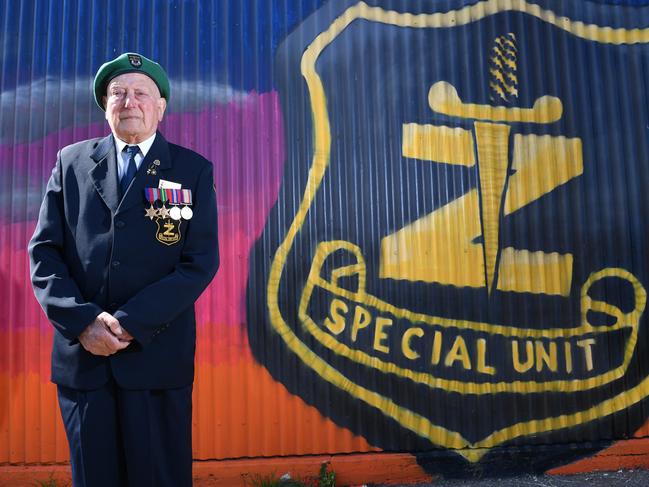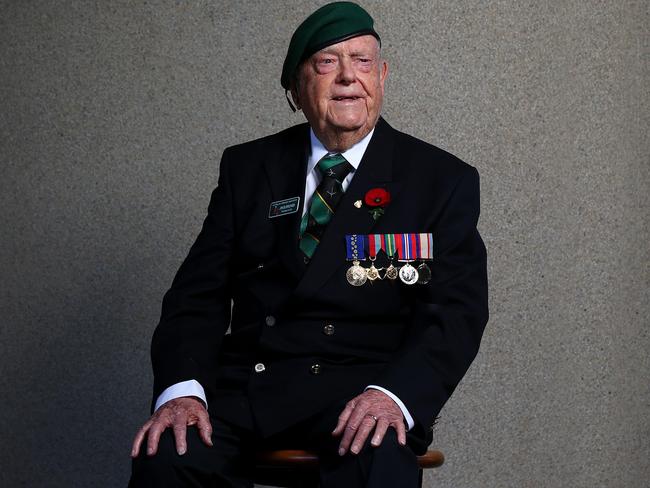Way We Were: Coastwatchers kept eye on Japanese movements in WWII
A top-secret spy network charged with monitoring Japanese movements north of Australia in World War II brought new meaning to isolation and confinement.
QLD News
Don't miss out on the headlines from QLD News. Followed categories will be added to My News.
THERE was no Foxtel, no Netflix, no Facebook, no Uber Eats and no Zoom. Only certain death, and a cruel one at that, if their places of confinement and isolation were uncovered.
The world has been turned on its head over the past few weeks, but if social distancing and a lack of entertainment options is getting you down while you’re stuck at home, spare a thought for the men and women who took isolation and confinement to new levels in the darkest days of World War II.
Way we were: England drops nuclear bombs in outback
Way We Were: High flyer helped put Australia on tourism map
Way we were: Nation stalls on news of Holden’s demise
Hidden in jungle lairs or fighting behind enemy lines, they helped preserve the freedoms Australians hold dear.
Two years ago, in the days when people could still congregate in Queensland, I had the honour of attending a lunch on the Gold Coast which paid tribute to some of the heroes who risked their lives every day behind enemy lines to save their country from conquest.
Anzac commemorations have been scrapped this year because of the coronavirus, but the enforced isolation and confinement only highlights the sacrifices made by a few to save so many during World War II.

At the Gold Coast function, held at the QT Hotel, Adelaide man Merv Fox, 95 at the time, needed help from Victoria Cross recipient Keith Payne to get to his feet, but once up, the old commando swung into gear, marching through the crowd proudly wearing his green beret.
He was joined by Jim Burrowes, 95, from Melbourne, Ern Rust, 97, from Sydney and Ronald “Dixie’’ Lee, 94, from Melbourne, along with Elizabeth Lees, 96, a retired schoolteacher from Coolangatta who as a 20-year-old was one of the officers working around the clock to decipher coded messages at army headquarters in Melbourne.
The late Eric Feldt, the husband of Courier-Mail journalist Nancy Echlin, and the man who established the Coastwatcher spy networks, was represented by his great-niece Betty Lee, a retired Brisbane doctor who recently released a book about Feldt’s extraordinary life and vital work that helped change the course of the war.
The Coastwatchers provided a security screen across the islands to Australia’s north, hiding behind enemy lines and using radios hidden in the jungle to transmit coded reports about Japanese movements.
At the time Japanese air raids on Pearl Harbor had left the pride of the American fleet in flames.
Singapore was swamped and Australian civilians were being executed in Rabaul. Bombing raids hit Darwin, Horn Island, Broome, Townsville, and submarine attacks were made on Newcastle and Sydney.
The Japanese hunted the Coastwatchers with dogs and used their prisoners for bayonet practice.

Jim Burrowes spied on the Japanese from his hide-out in the Baining Mountains above Rabaul. His brother Bob had been captured there by the Japanese and taken on the doomed Montevideo Maru, which sank to the bottom of the ocean in 1942 with the loss of all 1053 Australian prisoners. In 1943 Jim’s brother Tom was killed off Rabaul when a Beaufort bomber crashed.
Jim trained in Morse code and unarmed combat near Beaudesert and at the Jungle Warfare Training Centre at Canungra in the Gold Coast hinterland. He practised landings in rubber boats at Surfers Paradise. Every day above Rabaul as he hid out in the heat and the rain, Jim knew he could be caught and killed. But he stuck to his guns.
“I’d like Australia to remember all those who did not come home,’’ Jim told me.
“We all had a job to do and we did it to the best of our ability.’’
Please remember these men and women this weekend.
The audiobook version of Grantlee Kieza’s latest biography Macquarie is available through audible.com.au
Originally published as Way We Were: Coastwatchers kept eye on Japanese movements in WWII


